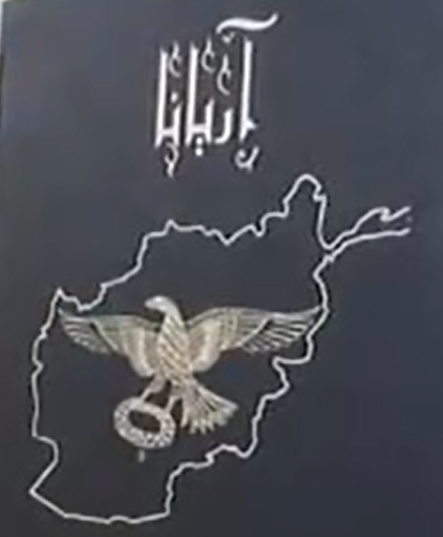
Three Afghan fascists, one encyclopaedia
Reading time: (Number of words: )
Afghanistan’s recently-revised encyclopaedia reveals shocking figures on ethnic composition for the country. Published by the "Academy of Science", formerly known as the "Pashto Tolana", the “Encyclopaedia of Aryana” has outrageously put the Pashtoons at 62.73% and Tajiks at 12.38%.
Although the head of Afghanistan’s Statistics Office has dismissed the figures as “unofficial” and “unacceptable”, the fact that it has gone to the print and contains President Karzai’s signature has caused an outcry in the troubled country.
The encyclopaedia also includes highly exaggerated number of Pashtoon “scholars”, personalities and makes false references, such as "Afghan Samanid rulers" and "ancient Afghanistan", by downplaying the land’s historic and respected name "Khorasan" which even Pashtoon rulers revered and described their territory until late 19th century. Other falsifications include claims that the word “Parthia” or “Persia” has evolved from Pashtana, Pakhtana and Paktiana.
The fact is that the name "Afghanistan" was first used by the British to the current territory. Before 19th century, "Afghanistan" was referred to the far south-east areas such as greater Paktia regions and the Pashtoon areas which are now part of Pakistan. The controversial word "Afghan" referred to the very people but later imposed on the entire population of today’s Afghanistan.
Since the early days of Islam, "Khorasan" contained eastern Iran, all of today’s Afghanistan & parts of Central Asia. Khorasan is the birthplace of renowned Persian scholars, philosophers and polymaths, such as Rumi, Khayyam, Avicenna, Al-Biruni, Farabi, Ferdausi, Zakariya Razi (Rhazes), etc. An increasingly number of areas or institutions are being named in Afghanistan after little-known Pashtoon personalities with total disregard to Khorasan’s great Persian heritage and its world class scholars.
Who has tampered with the encylopaedia?

Habibullh Rafi, a known Pashtoon nationalist, has been serving as head of the Encyclopaedia section of the Academy of Science since 2006 when another Pashtoon nationalist/conservative leader, Abdul Karim Kurram, became the minister of information and culture. Both are from the Sayed Abad district of Wardak. The highly controversial Khurram is currently serving as President Karzai’s chief of office.
What are the sources of encyclopaedia’s ethnic makeup?
The figures are fabrication by Pashtun super-nationalist Nabi Misdaq, who was head of the Pashto radio service of the BBC until mid 1990s. The supremacist was thrown out of the BBC for using his position and the corporation to incite ethnic tensions in Afghanistan. In a letter to Barack Obama, Hillary Clinton and Angela Merkel in 2010, Misdaq and a number of other well-known Pashtoonist ideologues quoted these ethnic figures to claim that the Pashtuns were victims of "injustices" in Afghanistan!
Misdaq, Sayed Jan Karwani, Farooq Azam and Ustad Nigargar met Taliban leaders in Kandahar in 1997. At a conference in London on return from Kandahar, Misdaq, head of the so-called “fact-finding mission”, praised the Taliban as the “true sons” Afghanistan. He also claimed that the Taliban governor of Kandahar Mullah Hassan had kissed their clean-shaved faces as a proof that they were not enforcing compulsory beard on men.
Are there other culprits?
Yes. Nabi Misdaq bases his invented ethnic composition, which also appears in his book (Afghanistan: Political Frailty and External Interference), on a so-called research by a non-existent “WAK Foundation in Norway”. This WAK seems to be his ghost venture with Hassan Wolasmal, former leader of the Pashtoon nationalist Afghan Millat Party (or Afghan Social Democrat Party).
Wolasmal spent 10 months in prison in Norway in late1990 for raping a disabled Norwegian boy, but released after his lawyers argued that he was mentally unfit. The story was published on major Norwegian papers, with one headline reading “62-year old Afghan pedophile imprisoned for rape”. The story was also published on the Farsi Omid Weekly in the USA after verified by the Norwegian embassy in the United States.
Wolasmal lived in Norway from 1986 to 2002 with his two wives (one under the guise of being his sister). He left for Afghanistan sometime after the release and now appears on TVs as a political commentator from time to time. In an interview with the Norwegian paper Dagbladet.no, in Kabul on 30 June 2006, about a hunger strike by Hazara refugees over uncertainty about their asylum cases, Wolosmal unethically claimed that the striking Hazaras were not in danger in Afghanistan. He, instead, argued that the Pashtoon refugees deserved asylum in Norway, not others.
At a time when Afghanistan needs unity more than anything else, Karzai, who was supposed to conduct a transparent national census with accordance to the Bonn Agreement, has signed the encyclopaedia to the dismay of the majority of the population. He and his Pashtoon predecessors have largely avoided conducting a census in Afghanistan fearing that the myth and fallacy of Pashtoon “majority” could be exposed.
What is the ethnic composition?
Until 2001, most international agencies, such the UN, US government, Library of US Congress, CIAFactbook, etc put the Pashtoons at 38% (see US link below). The figures were based on the general census conducted by communist Pashtoon President Noor Mohammad Taraki in June 1979. Population figures for all districts & provinces were later published in the “Atlas of Afghanistan” which was compiled by the UNDP, Afghanistan’s Central Statistics Office and Polish experts on the basis of the census. Most non-Pashtoons dispute this 38% because it includes a large and arbitrary figure for Pashtoon nomads in order to inflate over all Pashtoon population.
After the US occupation of Afghanistan, the CIAFactbook (now WorldFactbook), revised its figures for Afghanistan by putting the Pashtoons at 42%, Tajiks 27% and in contrast sharply downsized the Hazaras to 9% from 19%. This was largely seen as a move to justify giving a large share of political power and resources to the ethnic group in Afghanistan.

Poems for the Hazara
The Anthology of 125 Internationally Recognized Poets From 68 Countries Dedicated to the Hazara
Order Now








